
East Lothian is one of the 32 council areas of Scotland, as well as a historic county, registration county and lieutenancy area. The county was called Haddingtonshire until 1921.

Cockenzie and Port Seton is a unified town in East Lothian, Scotland. It is on the coast of the Firth of Forth, four miles east of Musselburgh. The burgh of Cockenzie was created in 1591 by James VI of Scotland. Port Seton harbour was built by George Seton, 11th Lord Seton between 1655 and 1665.

Tranent is a town in East Lothian, in the south-east of Scotland. The town lies 6 miles from the boundary of Edinburgh, and 9.1 miles from the city centre. It lies beside the A1 road, the A1 runs through the parish splitting the parish from its associated villages and hamlets namely Meadowmill and the port of the parish Cockenzie. The original main post road ran straight through the town until the new A1 was built. Built on a gentle slope, about 90 metres (300 ft) above sea level it is one of the oldest towns in East Lothian. The population of the town is approximately 12,140, an increase of over 4,000 since 2001. Tranent was formerly a major mining town, but now serves as a commuter town for Edinburgh.

Pencaitland is a village in East Lothian, Scotland, about 12 miles south-east of Edinburgh, 5 mi (8 km) south-west of Haddington, and 1 mi (2 km) east of Ormiston.
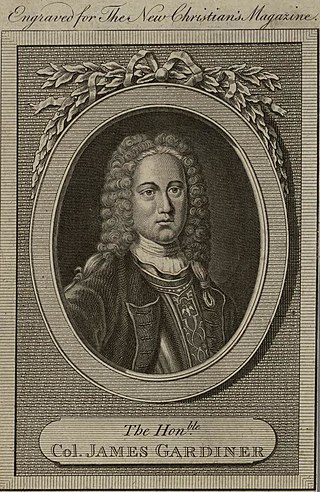
Colonel James Gardiner was a Scottish soldier who fought in the British Army, including during the 1745 Jacobite rising, in which he was killed at the Battle of Prestonpans.

Prestonpans is a small mining town, situated approximately eight miles east of Edinburgh, Scotland, in the Council area of East Lothian. The population as of 2020 is 10,460. It is near the site of the 1745 Battle of Prestonpans. Prestonpans is "Scotland's Mural Town", with many murals depicting local history.

George Seton, 3rd Earl of Winton was a notable Royalist and Cavalier, the second son of Robert Seton, 1st Earl of Winton and 6th Lord Seton, by his spouse Margaret, daughter of Hugh Montgomerie, 3rd Earl of Eglinton.

The Tranent to Cockenzie Waggonway was an early waggonway, possibly the first in Scotland, opened in 1722. It was 2+1⁄2 miles (4 km) miles long and connected coal pits at Tranent with the salt pans at Cockenzie and harbour at Port Seton in East Lothian, Scotland. The track was wooden, and wagons were drawn by horses. The Battle of Prestonpans in 1745 was fought across the line.
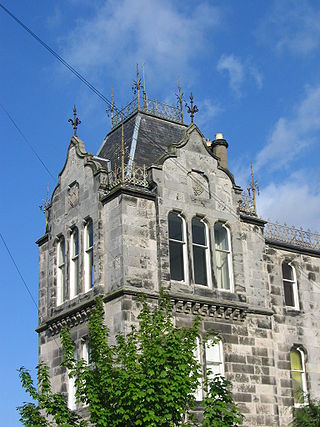
Preston was a village on the East Lothian coast of Scotland, and is now a small part of the centre of Prestonpans. It is to the east of Prestongrange, and the southwest of Cockenzie and Port Seton.
Hamilton House, also known as Magdalen's House, is a 17th-century "Laird's House" in the town of Prestonpans in East Lothian, Scotland. It is an exemplar of this type of architecture and has retained its crow-stepped gables and corner towers. It is owned by the National Trust for Scotland and is a Category A Listed Building.
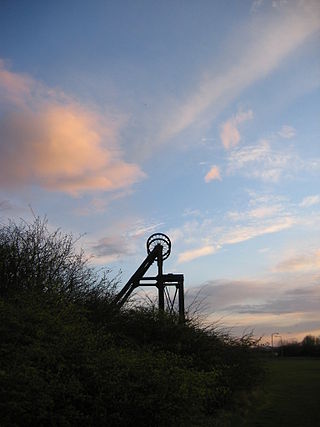
Prestongrange Museum is an industrial heritage museum at Prestongrange between Musselburgh and Prestonpans on the B1348 on the East Lothian coast, Scotland. Founded as the original site of the National Mining Museum, its operation reverted to East Lothian Council Museum Service in 1992.
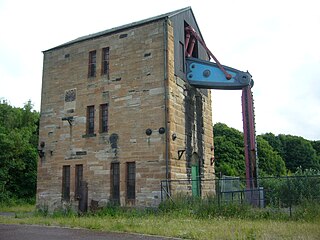
Prestongrange is a place in East Lothian, Scotland, United Kingdom, situated between Musselburgh to the west, and Prestonpans to the east.

Prestongrange House is a historic house at Prestongrange near Prestonpans, East Lothian, Scotland, UK. It is situated near to two other historic houses, Hamilton House and Northfield House.

The Royal Musselburgh Golf Club is a golf club at Prestongrange House, Prestongrange near Prestonpans, East Lothian, Scotland, on the B1361.
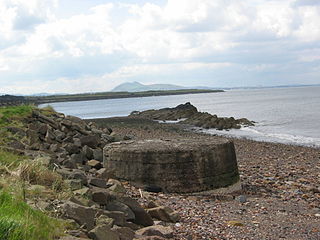
Morrison's Haven is a harbour at Prestongrange, East Lothian, Scotland, UK, on the B1348, close to Levenhall Links, Prestongrange Industrial Heritage Museum, Prestonpans, and Prestongrange House.
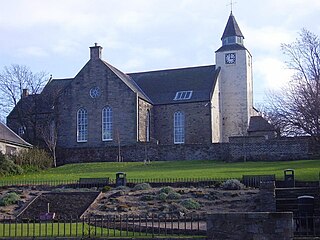
Prestongrange Parish Church is a Church of Scotland kirk situated in the small, former mining town of Prestonpans in East Lothian. The church was built in 1596, one of the first churches to be built in Scotland following the Scottish Reformation in 1560. In 1606, Prestonpans was created a parish in its own right following centuries of being part of the parish of Tranent.
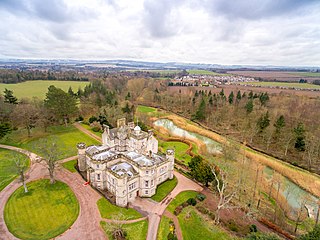
Winton Castle is a historic building set in a large estate between Pencaitland and Tranent in East Lothian, Scotland. The castle is situated off the B6355 road approximately 0.5 miles (0.80 km) north of Pencaitland at grid reference NT437694.

Ross High School is a large secondary school in Tranent, East Lothian. As of April 2021, the school roll was 1,259 (2021) making it the largest secondary school in East Lothian by pupil roll. The school was founded in 1954 and named after George Ross, who was convener of the local council at the time. The current head teacher is Paul Reynolds.

Andrew McDowall, Lord Bankton (1685–1760) was a Scottish law lord and Senator of the College of Justice.






















